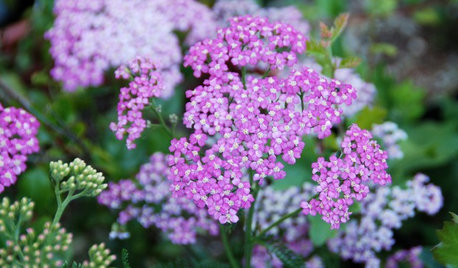Ladybug, ladybug, fly away home...
mulberryknob
10 years ago
Related Stories

HOUSEKEEPINGWhy Cleaning Window Screens Should Be Part of Your Winter Strategy
Dirty mesh blocks light, heat and views. Learn how to keep screens looking good and if they should be put away until spring
Full Story
LIFEHow to Make Your House a Haven Without Changing a Thing
Hung up on 'perfect' aesthetics? You may be missing out on what gives a home real meaning
Full Story
EARTH DAYHow to Help Your Town’s Beneficial Birds and Bugs
Make a habitat using local materials to provide a home to the creatures that help our gardens
Full Story
FUN HOUZZHouzz Pets: 50 Cats Cozy Up at Home
Design-Loving Felines Have the Run of the House
Full Story
SAVING WATER11 Ways to Save Water at Home
Whether you live in a drought-stricken area or just want to help preserve a precious resource, here are things you can do to use less water
Full Story
GARDENING GUIDESGreat Design Plant: Achillea Millefolium for Dry California Gardens
Yarrow attracts painted ladies and scares off garden thugs in native habitats and vegetable gardens
Full Story
KITCHEN DESIGN12 Rustic Touches That Add Warmth to a Kitchen
Exposed beams, chandeliers, farm tables or just a key accessory or two can bring some coziness to the heart of your home
Full Story
EDIBLE GARDENSGarden BFFs? Why Your Vegetables Are Begging for Companion Plants
Foster friendships among plants for protection from pests, pollination support and color camaraderie
Full Story
GARDENING AND LANDSCAPINGPorch Life: Banish the Bugs
Don't let insects be the bane of your sweet tea and swing time. These screening and product ideas will help keep bugs at bay on the porch
Full Story
GARDENING AND LANDSCAPINGBid Bad Garden Bugs Goodbye and Usher In the Good
Give ants their marching orders and send mosquitoes moseying, while creating a garden that draws pollinators and helpful eaters
Full StorySponsored
Central Ohio's Trusted Home Remodeler Specializing in Kitchens & Baths
More Discussions






soonergrandmom
mulberryknobOriginal Author
Related Professionals
Lakewood Landscape Architects & Landscape Designers · White Oak Landscape Architects & Landscape Designers · Brentwood Landscape Contractors · Burlington Landscape Contractors · Canton Landscape Contractors · East Haven Landscape Contractors · Mesa Landscape Contractors · Pikesville Landscape Contractors · Plainview Landscape Contractors · Point Pleasant Landscape Contractors · Spring Landscape Contractors · Fort Pierce Decks, Patios & Outdoor Enclosures · Medford Decks, Patios & Outdoor Enclosures · Pittsburgh Decks, Patios & Outdoor Enclosures · Rocklin Decks, Patios & Outdoor EnclosuresOkiedawn OK Zone 7
soonergrandmom
chickencoupe
Okiedawn OK Zone 7
jessaka
chickencoupe
jessaka
mulberryknobOriginal Author
jessaka
missbeckyfishing
Okiedawn OK Zone 7
missbeckyfishing